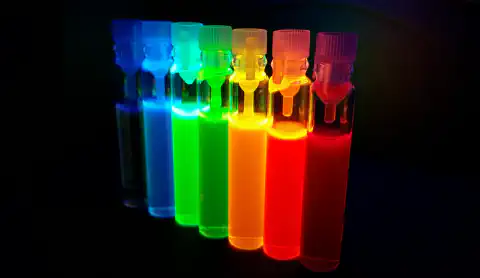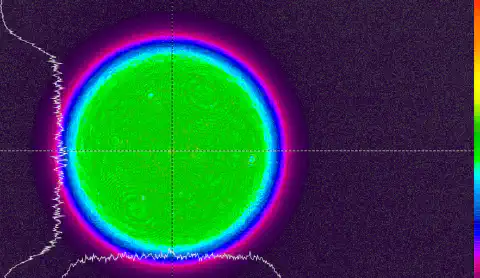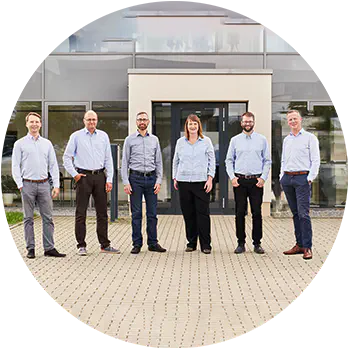
Large wavelength range
Special features of a|TopShape – Part 2
Do you know how our digital production extends the wavelength range of our TopShape to 320-1600 nm?

Our a|TopShape is an optical element that transforms a Gaussian beam profile into a top hat. One application where this becomes especially useful is Total Internal Reflection Fluorescence (TIRF) microscopy. TIRF is an important tool for biological imaging, but its illumination is problematic within single-molecule imaging. It is difficult to maintain a uniform illumination, which makes it challenging to accurately count the number of molecules over a large field of view.
A modified beam profile like a flat top beam can offer a solution, but to create the required evanescent field, a precise focus at the back focal plane of the TIRF objective is necessary. This requires a flat wavefront throughout the beam path. And what makes the situation even more challenging is that for many biological experiments, more than one wavelength is mandatory. This is where most beam-shaping tools struggle. To design a beam shaper that works over a wide wavelength range and still maintains its achromatic properties, a very precise knowledge of the optical components is necessary.

Here, it becomes very helpful that we at asphericon record a wide variety of parameters throughout the entire production process, from the properties of the single components to the settings of our production equipment. This information is then combined with our final inspection test results, providing a 360° view of our products. Thus, our optics engineers learn the possibilities and limitations of their designs. And the information inspires them to design products pushing the limits of optics production.
Our a|TopShape beam shaper is a good example of this approach. By carefully selecting the best materials and lens designs, a lens system was developed that works in a wavelength range of 320 to 1600 nm and maintains a flat wavefront over 1,5 m length. As a result, the laser beam can be focused tightly at varying excitation wavelengths and allows the use of multiple colors for super-resolution TIRF microscopy.
If you want to enhance your TIRF illumination with a flat-top beam profile and, at the same time, use your setup in a larger wavelength regime, we invite you to get in touch. Our team is happy to answer your questions and enhance your TIRF application.

